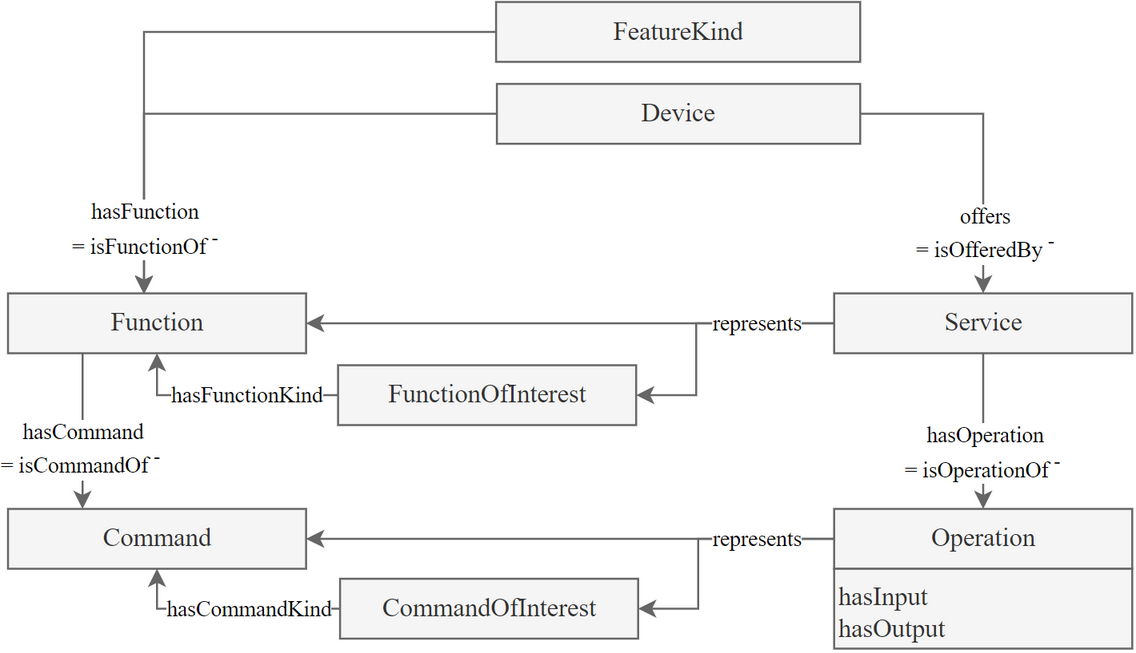SAREF patterns for services and operations
A saref:Service is a digital representation of a function in a network, making it discoverable, registerable and remotely controllable in the network.
A saref:Operation is the means of a service to communicate in a procedure-type manner over the network (i.e. transmit data to/from other devices). It is the -machine interpretable- exposure of a -human understandable- command to a network.
The figure below illustrates the main classes and properties in the SAREF Core patterns for Services and Operations.

The present document does not constrain the usage of the classes services and operations.
NOTE: This may change in a future release of the present document, after enough implementation evidence of these concepts is collected.
SAREF extensions and applications shall not define sub-properties of the following properties:
- saref:offers
- saref:isOfferedBy
- saref:hasOperation
- saref:isOperationOf
- saref:represents